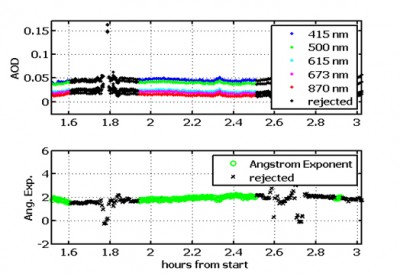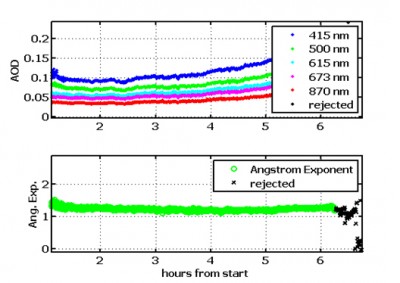Additional Data Added to Aerosol Optical Depth Product
Published: 4 February 2013


Recently, data from the AMF Gan Island (GAN) and Ganges Valley, India (PGH), deployments were added to the AOD VAP. Clouds were very often present at these two sites, and as a result, the fraction of time with cloud-free AODs is moderately reduced. The figures show examples of AODs collected on a 20-second interval during daylight cloud-free periods.
More information on AOD is available at the VAP web page. To access these data, log in to the Data Archive. (Go here to request an account.)
The ARM Climate Research Facility is a DOE Office of Science user facility. The ARM Facility is operated by nine DOE national laboratories, including .
Keep up with the Atmospheric Observer
Updates on ARM news, events, and opportunities delivered to your inbox
ARM User Profile
ARM welcomes users from all institutions and nations. A free ARM user account is needed to access ARM data.


















